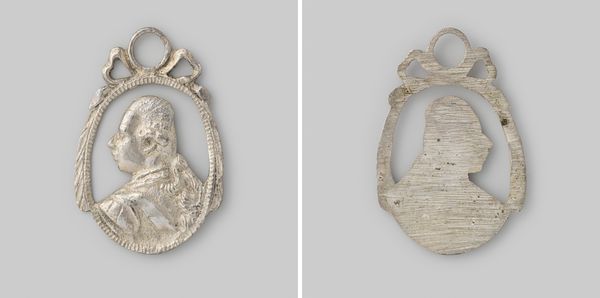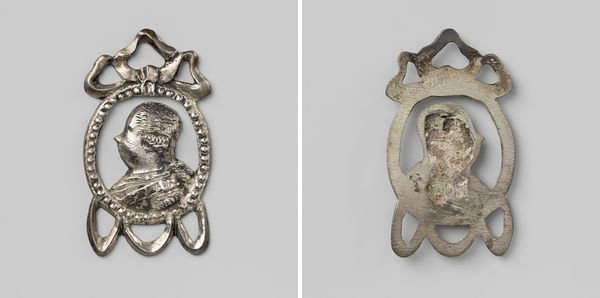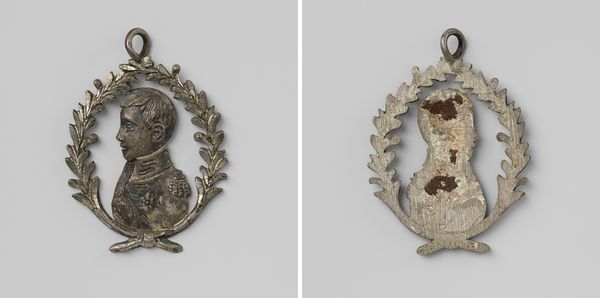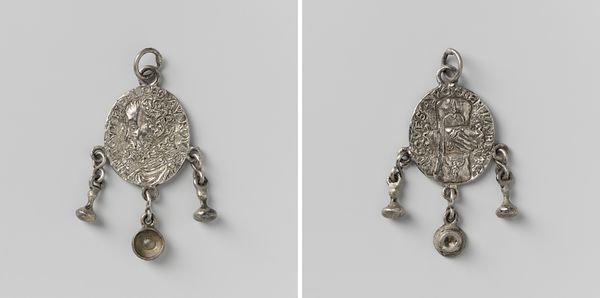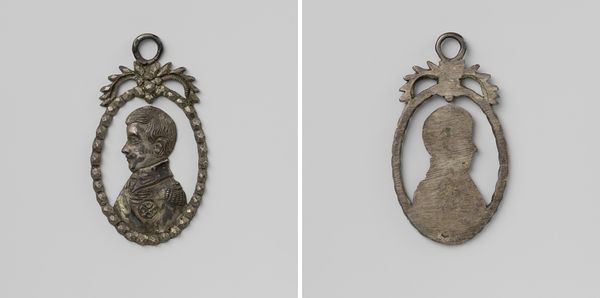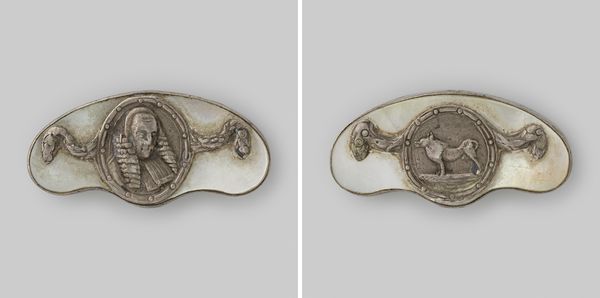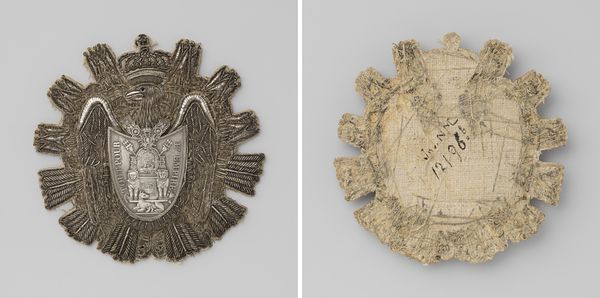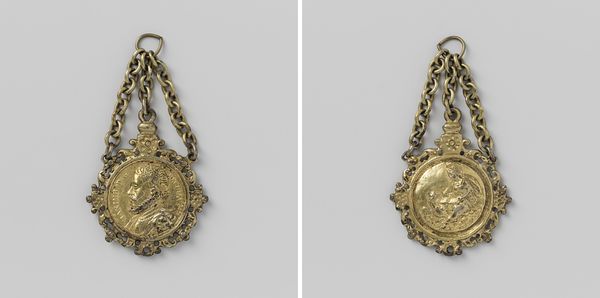
Willem V en Wilhelmina van Pruisen, prins en prinses van Oranje-Nassau 1787
0:00
0:00
anonymous
Rijksmuseum
metal, engraving
#
neoclacissism
#
metal
#
history-painting
#
engraving
#
miniature
Dimensions: length 5.1 cm, length 3.8 cm, width 2.9 cm, weight 11.38 gr
Copyright: Rijks Museum: Open Domain
Curator: Here we have a miniature engraving on metal dating back to 1787, titled "Willem V en Wilhelmina van Pruisen, prins en prinses van Oranje-Nassau," currently held at the Rijksmuseum. Editor: It’s incredibly delicate. The metallic sheen gives it a formal yet precious feel, like a token or perhaps a political badge. Curator: Precisely. It serves as a political object and as a marker of status. Consider how imagery was deployed to bolster the image of the Dutch Royal family during a turbulent political period. The piece’s style is decidedly Neoclassical, a style embraced by elites across Europe. Editor: Look at the craftsmanship, though. Someone meticulously worked this metal. You see the dedication and time involved in producing these miniature engravings, likely reproduced for wider distribution, given the social context of royalty at the time. It points to the labor invested in creating symbols of power and identity. Curator: These types of items were crucial in visually connecting the monarchy with the populace, a very conscious effort by the Dutch royal house. Mass production techniques allowed for broader dissemination and impact, amplifying royal authority across Dutch society. Editor: And to think about the metal itself: its sourcing, processing, the very act of transforming raw material into this object...it’s a whole social history contained within the artwork. Metalworking itself, then as now, has social implications, dictating accessibility, distribution, and worth. Curator: The deliberate classical allusion would also have spoken volumes to the educated elite, conveying messages of legitimacy, order, and cultural refinement associated with royalty. It reveals their deep integration in the political symbolism of the era. Editor: Examining the physical dimensions and making processes is quite fascinating. How does the scale affect how these pieces are made, distributed, and received in 18th century society? It certainly deepens our knowledge about materiality and power. Curator: Indeed. Viewing this piece reveals the interwoven tapestry of artistry, craftsmanship, and public perception in the age of monarchies and rising nationalism. Editor: Absolutely, by acknowledging the labor, production, and circulation, the social implications become that much clearer, which truly reshapes my understanding of this era.
Comments
No comments
Be the first to comment and join the conversation on the ultimate creative platform.
